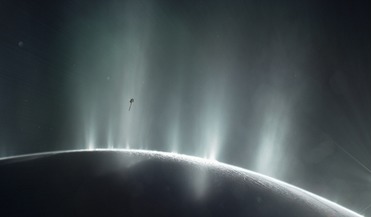 14 April 2017
Cassini finds evidence for hydrothermal vent activity on Enceladus
14 April 2017
Cassini finds evidence for hydrothermal vent activity on Enceladus
...with rock beneath the sea. This new finding is therefore an independent line of evidence supporting the theory of hydrothermal activity taking place in the ocean of Enceladus. This graphic illustrates how Cassini scientists think water interacts with...
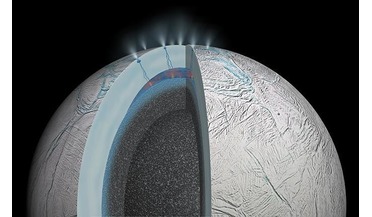 07 July 2021
Methane detected on Enceladus could be a sign of life, study shows
07 July 2021
Methane detected on Enceladus could be a sign of life, study shows
...and methane in the plume. Interestingly, the team’s results suggest that Cassini's data is consistent with microbial hydrothermal vent activity. “Biological methanogenesis appears to be compatible with the data,” Ferriere says. But, say the team, the...
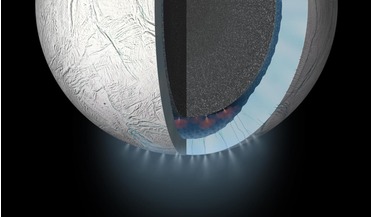 24 January 2020
New study suggests Enceladus' oceans more habitable than previously thought
24 January 2020
New study suggests Enceladus' oceans more habitable than previously thought
... and colleagues say that chemical reactions with iron deep in Enceladus’ core is creating molecular hydrogen (H2). Then hydrothermal activity bursting through quartz-bearing carbonated rocks produces silica-rich fluids. These rocks also have the...
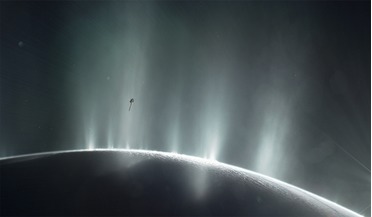 06 November 2017
Enceladus more active than previously thought
06 November 2017
Enceladus more active than previously thought
...'s more, these intense jets also seem associated with ongoing seafloor hydrothermal activity. But despite these alluring aspects, a process to explain the transport of hydrothermal products from the core to the plume sources and a mechanism to fuel...
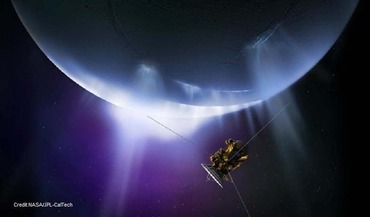 18 December 2015
Last look at geological activity on Enceladus before Cassini moves on
18 December 2015
Last look at geological activity on Enceladus before Cassini moves on
... showing a cutaway view into the interior of Saturn’s moon Enceladus, suggested to have a global ocean and likely hydrothermal activity. A plume of ice particles, water vapour and organic molecules sprays from fractures in the moon's south polar...
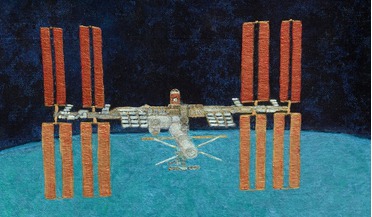 March 2016
Space for art
March 2016
Space for art
... to Saturn. Further Cassini mission discoveries revealed strong evidence of a global ocean and the first signs of potential hydrothermal activity beyond Earth – making this tiny Saturnian moon one of the leading locations in the search for possible...